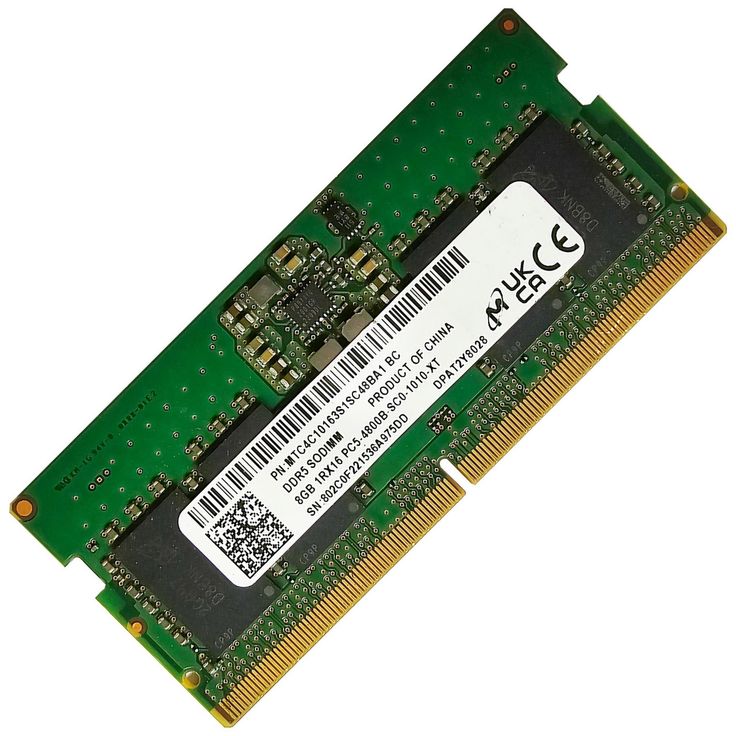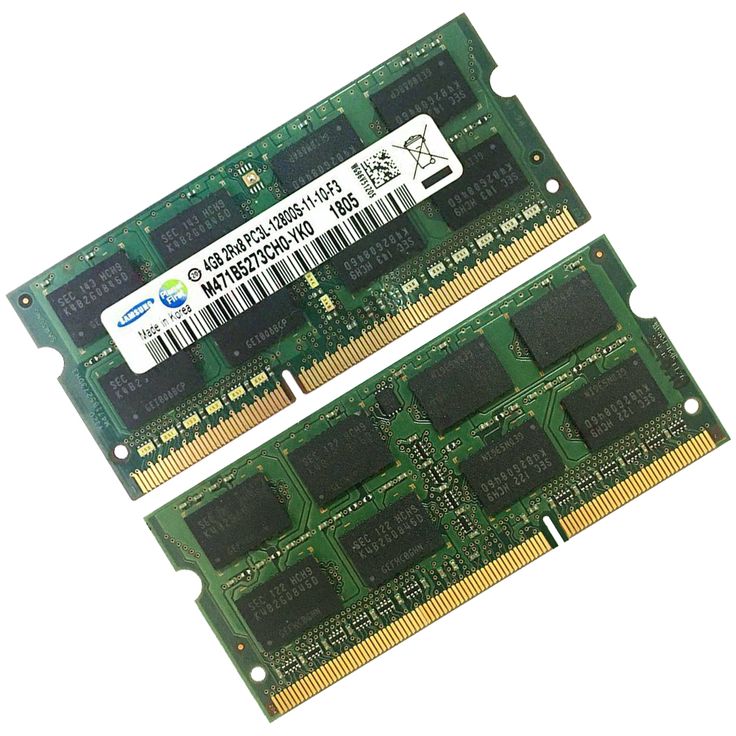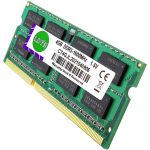Introduction to DIMMs
DIMMs, or dual inline memory module definition, significantly impact computer performance. They’re essential for your system’s data transfer and speed. In essence, DIMMs are the mainstay of your computer’s memory, directly interfaced with the CPU for efficient data processing.

A DIMM consists of a series of dynamic random-access memory (DRAM) chips on a circuit board, which interfaces with the motherboard. They are the successors to single inline memory modules (SIMM), providing crucial advancements such as a 64-bit data path – aligning with modern 64-bit processors’ capabilities.
In contrast, SIMMs could only offer a 32-bit path, often requiring pair installations to match capacity. Fortunately, DIMMs addressed and eliminated this limitation by allowing single-module operation for 64-bit data width. Their evolution brought enhancements in the form of increased pin counts, varying from 168 to 288 in modern modules, to support faster data transfer rates.
As technology has grown, so has the need for larger and quicker memory options, paving the way for types of DIMMs like UDIMM, or unbuffered DIMM, commonly used in desktops and laptops. Moreover, RDIMM, or registered DIMM, often found in servers, enables stable, large-capacity memory solutions. Other variants like load-reduced DIMMs (LR-DIMMs) and small outline DIMMs (SO-DIMMs) cater to diverse applications and devices, from high-performance servers to compact portable devices.
The rise of DDR4 and DDR5 RAM has further pushed DIMM technology. These innovations have meant bigger memory capacities and higher clock speeds, critical for modern computing’s demanding applications.
Understanding these components empowers users to select the most suitable memory for their computing needs, whether that’s for personal computing, professional workstations, or enterprise servers.
DIMM vs. SIMM: Evolution and Advancements
DIMMs and SIMMs serve as critical memory modules in computers, yet they differ significantly.
Evolution from SIMM to DIMM
Originally, SIMMs (Single In-line Memory Modules) had a limited 32-bit data path that required pairs for optimal functionality. This often doubled the physical space needed on the motherboard. DIMMs (Dual In-line Memory Modules) evolved to overcome this limitation by offering a 64-bit data path that supports modern processors more effectively and efficiently. This single module setup, as opposed to the paired necessity in SIMMs, allows for sleeker computer designs and quicker memory access.
Technical Advancements in DIMMs
DIMMs have advanced in terms of pin count and memory capacity; originally featuring a 168-pin connector, modern versions boast up to 288 pins. This development enables quicker data transfer rates, vital for high-performance computing scenarios. Techniques such as Registered DIMMs (RDIMMs) and Load-Reduced DIMMs (LR-DIMMs) now offer solutions for enhanced stability and reduced electrical load, crucial for server environments.
DIMMs Improving Over Time
With progress in dynamic RAM technology, DIMMs have incorporated features like error correcting code (ECC) and on-module temperature sensors that contribute to reliable and efficient system performance. DDR4 and DDR5 RAM advancements have further transformed DIMMs, accommodating broader bandwidth and faster clock speeds which are indispensable for contemporary applications.
Types of DIMMs: UDIMM, RDIMM, and More
DIMMs have diversified into several types, each serving different computing needs and environments.
UDIMM: Ideal for Standard Computing
Unbuffered dual inline memory module definition, or UDIMMs, are often used in desktops and laptops. They are favored for their speed and lower cost; however are not as stable as some buffered alternatives.

RDIMM: Stability for Servers
Registered DIMMs (RDIMMs) are common in servers due to their on-board memory registers. These provide better stability by reducing the electrical load on the memory controller.
LR-DIMM: High Density for Enterprise
Load-Reduced DIMMs (LR-DIMMs) enable higher density memory configurations while minimizing the electrical demand on the system.
SO-DIMM: Compact Form for Portables
Small Outline DIMMs (SO-DIMMs) are smaller versions of DIMMs, optimized for portable devices such as laptops and tablets.
Choosing the right type of dual inline memory module definition is crucial for system compatibility and achieving optimal performance.
The Role of Cooling Structures in DIMMs
With the growing demands for higher performance and larger capacities, DIMMs now come equipped with built-in cooling structures to manage heat effectively.
Keeping DIMMs Cool under Heavy Loads
As DIMM capacities increase, more heat generates during operation, especially with high clock speeds and dense chip configurations. To combat this, some DIMMs feature heat spreaders or heat sinks that dissipate heat away from the memory chips. These cooling structures are crucial for maintaining stability and reliability, as excess heat can lead to reduced performance or even hardware failure.
Importance of Thermal Management in DIMM Efficiency
Effective cooling extends the lifespan of DIMMs and ensures consistent performance. Heat spreaders made of materials with high thermal conductivity, such as aluminum or copper, draw heat away from memory chips. This not only prevents thermal throttling but also allows for more aggressive clock speeds and tighter timings, both of which enhance the overall speed and responsiveness of a computer system.
Advanced Cooling Techniques for High-Capacity DIMMs
For DIMMs that house higher capacity memory chips, such as those with DDR4 technology, manufacturers may incorporate more elaborate cooling solutions. These can include integrated cooling fins or even liquid cooling systems in extreme use cases. Adequate cooling is particularly important for DIMMs in servers and workstations where 24/7 operation under heavy loads is common. By keeping these components at optimal temperatures, servers can maintain peak performance and reliability, even in data-intensive tasks.
Cooling structures are vital for the effective and efficient operation of modern DIMMs, contributing to the overall health and performance of computing systems.
How DIMMs Work: Data Transfer and Speed
DIMMs are critical for quick and efficient data transfer in your computer. They provide a data path that matches the width of most modern processors, which is typically 64 bits. This alignment allows for full-speed data transfer between your CPU and memory, leading to faster performance overall.
The 64-bit Data Path Advantage
A DIMM’s 64-bit data path is perfect for personal computers. This means each memory operation can handle twice as many data bits as older 32-bit SIMMs. Because of this, the performance of your computer increases, making multitasking and demanding tasks smoother.
Speed Enhancements with Modern DIMMs
With more pins, modern DIMMs can handle higher data transfer rates. This reduces the delay, known as latency, and speeds up the memory’s response time. Higher clock speeds in DDR4 and DDR5 technology also contribute to this increased pace, giving you quicker access to your data.
Cooling Features Maintain Performance
To handle increased data rates, DIMMs often include cooling features. This keeps them from overheating, which can otherwise slow down data transfer speeds. Cooling structures like heat spreaders draw away heat, maintaining high performance even under heavy use.
Voltage and Power Management
Modern DIMMs are not only faster but also smarter with power. Lower voltage requirements mean less power consumption. This not only saves energy but helps DIMMs run cooler, which in turn keeps data flowing rapidly and reliably.
Scalable Performance with Multi-channel DIMMs
Advanced motherboards support multi-channel DIMM configurations. This allows them to use bandwidth from multiple DIMMs simultaneously, ramping up data throughput substantially. It’s like increasing the number of lanes on a highway — more data can move quickly at the same time.
Overall, DIMMs enable rapid data exchange which is essential for modern computing. With the continued evolution of DRAM technology, we can expect even faster and more energy-efficient DIMMs in the future.
Selecting the Right DIMM: Compatibility and Performance
Selecting the appropriate DIMM for your system involves understanding your system’s requirements and the DIMM’s characteristics. Choosing correctly ensures compatibility and optimizes performance, preventing potential system conflicts or memory shortages.
Assessing DIMM Compatibility
Start by identifying your motherboard’s specification. It dictates the type, speed, and size of DIMM it can support. For desktops, UDIMMs are common, while servers often utilize RDIMMs or LR-DIMMs to handle larger memory loads. SO-DIMMs are suitable for laptops and other compact devices.
Matching DIMM Specifications with System Needs
Your CPU’s capabilities also influence the DIMM choice. Modern processors often require faster, more robust memory modules such as DDR4 or DDR5 DIMMs. Ensure the DIMM’s speed and type align with the processor’s requirements to maximize throughput.
Performance Considerations
For enhanced performance, consider DIMMs with additional features like ECC, which helps in error correction, and those with advanced cooling systems for better thermal management. These features are vital for systems running intensive applications.
Upgrading with Future Compatibility
Future-proof your investment by choosing DIMMs that not only meet current specifications but also accommodate future updates. DDR5 DIMMs, while currently more expensive, offer longer relevance as technology advances.
Selecting the right DIMM is a critical step towards building a stable, efficient, and powerful computing environment. Proper assessment and careful matching of DIMM specifications with system needs are essential for optimal system performance.
The Impact of DDR4 and DDR5 on DIMM Technology
The arrival of DDR4 and DDR5 memory has revolutionized DIMM technology. These newer memory standards offer higher speeds, efficiency, and reliability, tailoring to the increasing demands of modern computing.
DDR4 Enhances Data Transfer and Efficiency
DDR4 RAM introduced enhancements in data transfer rates and energy efficiency compared to its predecessors. It supports increased memory capacities and has higher data transfer speeds. DDR4 operates at a lower voltage, reducing power consumption and heat production. This helps in maintaining system stability and extends the hardware’s longevity.
With DDR4, DIMMs saw an increase in pin count to 288. This upgrade permitted even faster data processing and became a standard in most desktops and servers.
DDR5 Sets New Performance Benchmarks
DDR5 further builds on the groundwork laid by DDR4. It offers double the bandwidth and greatly improves power management over DDR4. With DDR5, DIMMs become capable of even higher capacities and speeds, meeting the needs of data-intensive applications and pushing computing potential even further.
DDR5 also features on-die error correcting code (ECC), which enhances data reliability. The improved I/O efficiency ensures that systems run smoother, even under the strain of high-performance tasks.
DDR5 is the latest evolution in DIMM technology, promising to keep pace with advancements in CPU and GPU performance for years to come.
The Role of DDR4 and DDR5 in Future-Proofing
Both DDR4 and DDR5 play crucial roles in preparing systems for future advancements. As applications become more demanding and data volumes grow, the need for faster and more reliable memory becomes clear. DDR4 and DDR5-equipped DIMMs are pivotal for users looking to build resilient systems capable of handling tomorrow’s challenges.
In summary, DDR4 and DDR5 have greatly impacted dual inline memory module definition technology by providing improved performance, efficiency, and future-proofing capabilities. This ensures that computers can tackle the increasing complexity of modern applications and workflows.
Applications and Devices Utilizing DIMMs
DIMMs serve a vital role in a variety of electronic devices. Their broad usage underlines their flexibility and importance in modern technology. From everyday gadgets to complex systems, DIMMs are the backbone of contemporary computational power.

Desktop Computers and Laptops
Desktops and laptops commonly rely on DIMMs to handle everyday tasks. They use UDIMMs for their regular memory needs, enabling efficient management of multiple applications.
High-Performance Workstations and Servers
Advanced computing systems, like high-performance workstations and servers, typically use RDIMMs or LR-DIMMs. These DIMMs offer stability and capacity, which are essential for managing significant data.
Portable Computing Devices
For portable electronics such as laptops and tablets, SO-DIMMs are standard. These compact DIMMs fit well in the limited space of such devices without compromising memory capacity.
Printers and Networking Devices
Printers and some networking devices also incorporate DIMMs. They help in processing complex tasks and managing the device’s internal functions swiftly.
Gaming Consoles
Gaming consoles have begun to employ dual inline memory module definition as well. These modules enhance the device’s ability to handle graphic-intensive games and improve the overall user experience.
Industrial and Medical Equipment
In industrial and medical settings, DIMMs are essential. They ensure machinery and equipment process data rapidly and reliably, which is critical in these high-stakes environments.
Given their wide range of applications, the adoption of dual inline memory module definition across various sectors highlights their versatility and critical role in the advancement of digital technology. As devices continue to evolve, DIMMs will remain a key component in meeting the growing need for powerful and efficient memory solutions.
Future of DIMMs: Advancements and Industry Standards
The world of computing consistently evolves, and DIMMs are no exception. Anticipating the future, we can expect continued advancements in DIMM technology.
Upcoming Advancements in DIMM Technology
In the near future, DIMMs will likely see advancements in speed, capacity, and efficiency. Memory manufacturers are always pushing the limits, leading to DIMMs that operate at faster clock speeds with even greater memory capacity. These improvements will undoubtedly cater to the data-heavy demands of future applications and systems.
Furthermore, the integration of new cooling technologies will become standard. This is critical for managing the heat output from higher-performing memory modules. Manufacturers may also increase the pin count beyond DDR4 and DDR5 specifications, facilitating faster data transfers and improved overall performance.
Industry Standards Shaping DIMM Development
Industry standards greatly shape the development and adoption of new DIMM technology. Organizations like JEDEC set the guidelines for memory module specifications, ensuring compatibility and performance across different devices. As we move forward, these standards will incorporate the advances in memory technology, potentially giving rise to new DIMM form factors and operational protocols.
The push for green computing and energy efficiency will also influence dual inline memory module definition design. Future DIMMs might boast features focused on reducing power consumption while maintaining high performance. Such eco-friendly advancements will resonate well with the growing emphasis on sustainability in technology.
DIMMs in Emerging Technologies
Expect to see DIMMs playing a crucial role in emerging technologies like AI, big data analytics, and the Internet of Things (IoT). These areas rely on rapid data processing and high memory capacity. Advances in DIMM technology will be fundamental to supporting the computational power needed for these cutting-edge domains.
In summary, the future of DIMMs holds promising enhancements in speed, capacity, and energy efficiency, driven by industry standards and the burgeoning needs of advanced computing platforms. As technology continues to develop, DIMMs will adapt to offer robust solutions for the storage challenges of tomorrow.

